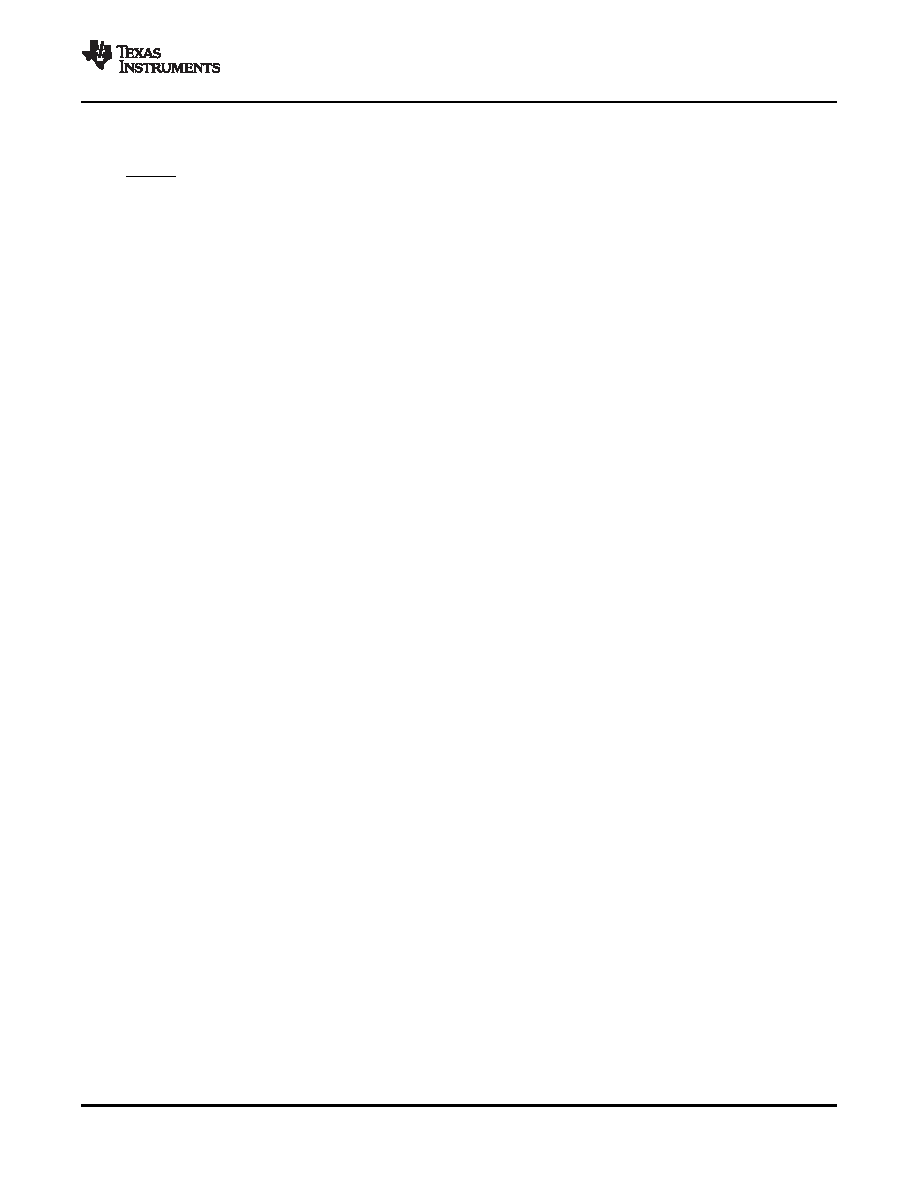- 您現在的位置:買賣IC網 > PDF目錄98302 > TSC2117IRGZT (TEXAS INSTRUMENTS INC) SPECIALTY CONSUMER CIRCUIT, QCC48 PDF資料下載
參數資料
| 型號: | TSC2117IRGZT |
| 廠商: | TEXAS INSTRUMENTS INC |
| 元件分類: | 消費家電 |
| 英文描述: | SPECIALTY CONSUMER CIRCUIT, QCC48 |
| 封裝: | 7 X 7 MM, GREEN, PLASTIC, VQFN-48 |
| 文件頁數: | 109/192頁 |
| 文件大小: | 2728K |
| 代理商: | TSC2117IRGZT |
第1頁第2頁第3頁第4頁第5頁第6頁第7頁第8頁第9頁第10頁第11頁第12頁第13頁第14頁第15頁第16頁第17頁第18頁第19頁第20頁第21頁第22頁第23頁第24頁第25頁第26頁第27頁第28頁第29頁第30頁第31頁第32頁第33頁第34頁第35頁第36頁第37頁第38頁第39頁第40頁第41頁第42頁第43頁第44頁第45頁第46頁第47頁第48頁第49頁第50頁第51頁第52頁第53頁第54頁第55頁第56頁第57頁第58頁第59頁第60頁第61頁第62頁第63頁第64頁第65頁第66頁第67頁第68頁第69頁第70頁第71頁第72頁第73頁第74頁第75頁第76頁第77頁第78頁第79頁第80頁第81頁第82頁第83頁第84頁第85頁第86頁第87頁第88頁第89頁第90頁第91頁第92頁第93頁第94頁第95頁第96頁第97頁第98頁第99頁第100頁第101頁第102頁第103頁第104頁第105頁第106頁第107頁第108頁當前第109頁第110頁第111頁第112頁第113頁第114頁第115頁第116頁第117頁第118頁第119頁第120頁第121頁第122頁第123頁第124頁第125頁第126頁第127頁第128頁第129頁第130頁第131頁第132頁第133頁第134頁第135頁第136頁第137頁第138頁第139頁第140頁第141頁第142頁第143頁第144頁第145頁第146頁第147頁第148頁第149頁第150頁第151頁第152頁第153頁第154頁第155頁第156頁第157頁第158頁第159頁第160頁第161頁第162頁第163頁第164頁第165頁第166頁第167頁第168頁第169頁第170頁第171頁第172頁第173頁第174頁第175頁第176頁第177頁第178頁第179頁第180頁第181頁第182頁第183頁第184頁第185頁第186頁第187頁第188頁第189頁第190頁第191頁第192頁

5.2.1.2 Device Start-Up Lockout Times
5.2.1.3 PLL Start-Up
5.2.1.4 Power-Stage Reset
5.2.1.5 Software Power Down
5.2.2
Audio Analog I/O
5.3 miniDSP
TSC2117
Low-Power Audio Codec With Embedded miniDSP, Stereo Class-D
Speaker Amplifier, and Smart Four-Wire Touch-Screen Controller
www.ti.com
SLAS550A – APRIL 2009 – REVISED JUNE 2009
After the TSC2117 is initialized through hardware reset at power-up or software reset, the internal
memories are initialized to default values. This initialization takes place within 1 ms after pulling the
RESET signal high. During this initialization phase, no register-read or register-write operation should be
performed on ADC or DAC coefficient buffers. Also, no block within the codec should be powered up
during the initialization phase.
Whenever the PLL is powered up, a start-up delay of approximately of 10 ms occurs after the power-up
command of the PLL and before the clocks are available to the codec. This delay is to ensure stable
operation of the PLL and clock-divider logic.
The power-stage-only reset is used to reset the device after an overcurrent latching shutdown has
occurred. Using this reset re-enables the output stage without resetting all of the registers in the device.
Each of the four power stages has its own dedicated reset bit. The headphone power-stage reset is
performed by setting page 1/register 31, bit D7 for HPL and by setting page 1/register 31, bit D6 for HPR.
The speaker power-stage reset is performed by setting page 1/register 32, bit D7 for SPLP and SPLN,
and by setting page 1/register 32, bit D6 for SPRP and SPRN.
By default, all circuit blocks are powered down following a reset condition. Hardware power up of each
circuit block can be controlled by writing to the appropriate control register. This approach allows the
lowest power-supply current for the functionality required. However, when a block is powered down, all of
the register settings are maintained as long as power is still being applied to the device. The TSC2117
touch-detection circuitry is enabled by default, and it can be powered down by writing to page 3/register 4,
bit D7.
The TSC2117 has a stereo audio DAC and a monaural ADC. It supports a wide range of analog interfaces
to support different headsets and analog outputs. The TSC2117 has features to interface output drivers
(8-
, 16-, 32-) and a microphone PGA with AGC control. A special circuit has also been included in
the TSC2117 to insert a short key-click sound into the stereo audio output. The key-click sound is used to
provide feedback to the user when a particular button is pressed or item is selected. The specific sound of
the keyclick can be adjusted by varying several register bits that control its frequency, duration, and
amplitude. See Key-Click Functionality With Beep Generator, Section 5.6.5
The TSC2117 features two miniDSP cores. The first miniDSP core is tightly coupled to the ADC; the
second miniDSP core is tightly coupled to the DAC. The fully programmable algorithms for the miniDSP
must be loaded into the device after power up. The miniDSPs have direct access to the digital stereo
audio stream on the ADC and on the DAC side, offering the possibility for advanced, very low-group-delay
DSP algorithms.
The ADC miniDSP has 384 programmable instructions, 256 data memory locations, and 128
programmable coefficients. The DAC miniDSP has 1024 programmable instructions, 896 data memory
locations, and 512 programmable coefficients (in the adaptive mode, each bank has 256 programmable
coefficients).
APPLICATION INFORMATION
23
相關PDF資料 |
PDF描述 |
|---|---|
| TSC2300IPAGG4 | SPECIALTY CONSUMER CIRCUIT, PQFP64 |
| TSC2300IPAGR | SPECIALTY CONSUMER CIRCUIT, PQFP64 |
| TSC2300IPAG | SPECIALTY CONSUMER CIRCUIT, PQFP64 |
| TSC2300IPAGRG4 | SPECIALTY CONSUMER CIRCUIT, PQFP64 |
| TSC2301IPAGR | SPECIALTY CONSUMER CIRCUIT, PQFP64 |
相關代理商/技術參數 |
參數描述 |
|---|---|
| TSC2117IRGZT | 制造商:Texas Instruments 功能描述:Touch Screen Controller IC |
| TSC22 | 制造商:未知廠家 制造商全稱:未知廠家 功能描述:EURO TERMINAL BLOCKS |
| TSC2200 | 制造商:BB 制造商全稱:BB 功能描述:PDA ANALOG INTERFACE CIRCUIT |
| TSC2200EVM | 功能描述:觸摸傳感器開發工具 Touch Screen Contr Eval Mod RoHS:否 制造商:Cypress Semiconductor 工具用于評估: 接口類型: 工作電壓: 最大工作溫度: |
| TSC2200IPW | 功能描述:觸摸屏轉換器和控制器 Prog 4-Wire w/12-Bit 125KHz ADC & Key Ifc RoHS:否 制造商:Microchip Technology 類型:Resistive Touch Controllers 輸入類型:3 Key 數據速率:140 SPS 分辨率:10 bit 接口類型:4-Wire, 5-Wire, 8-Wire, I2C, SPI 電源電壓:2.5 V to 5.25 V 電源電流:17 mA 工作溫度:- 40 C to + 85 C 封裝 / 箱體:SSOP-20 |
發布緊急采購,3分鐘左右您將得到回復。